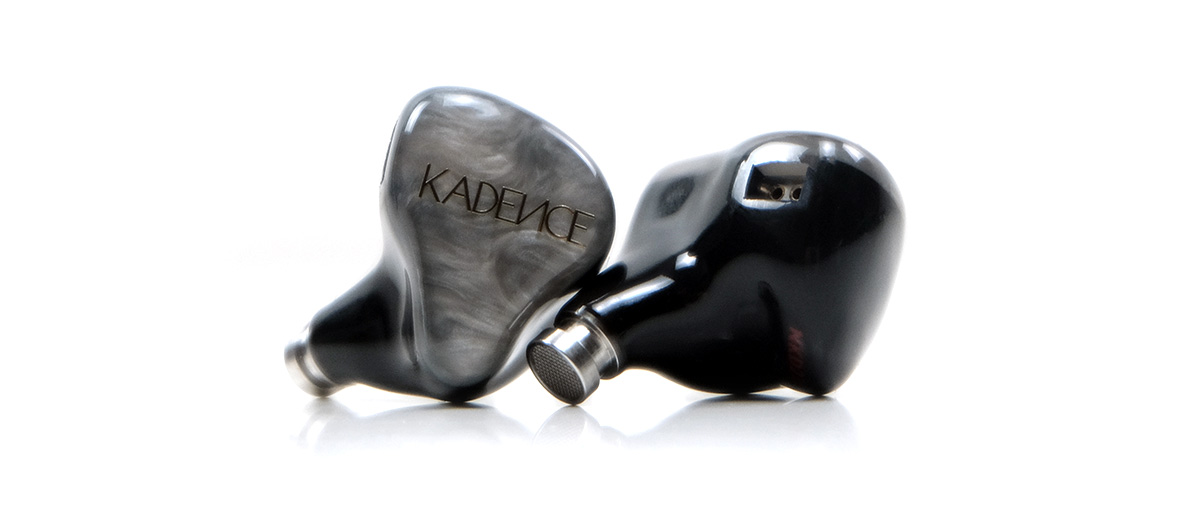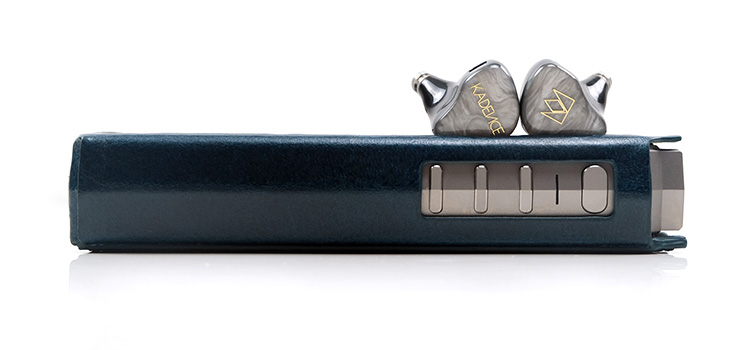Sound Impressions
Summary
The Noble Audio Kadence does what all well-implemented multi-BA driver IEMs like to do which is deliver a very coherent, finely balanced sound signature. One with an emphasis on articulation and resolution, but with a level of treble effervescence that in many ways is Noble’s trademark these days.
That top-end sparkle is complimented by a clean midrange tone and a slightly north-of-neutral upper mids presence but still sounds very composed to my ear, especially with tube DAPs such as the iBasso Dx320/AMp13 combo and the Cayin N8ii.
The lows surprised me. Yup, it’s BA so it’s nowhere near as deep or as powerful as the Kublai Khan or even as weighted as the older Vision Ears VE8 8 BA driver design. What it does have is space and clarity with a very well-defined mid-bass punch that underpins the more delicate midrange and treble notes perfectly.
The phrase that comes to mind is ‘high fidelity’ with more emphasis on digging into the layers of audio and fleshing out a lot of micro-detail and presenting it within an almost ethereal staging quality.
The Kadence is super-efficient also, perhaps Noble’s easiest to drive that I have heard to date. It can be sensitive to background hiss on some dongles such as the RU6 which I was not expecting but not too distracting.
However, it plays like a dream on most DAPs tested including the aforementioned tube DAPs and the likes of the HiBy RS8 in Turbo Mode low-gain where the mid-bass punch was at its most vibrant.
Frequency Response
The Kadence has something of stretched and very gentle U-shaped curve with an emphasis on the lows and upper mids to the highs from a rising curve that starts quite early, in and around 1-2k. There is no 4-5k dip like you saw on the Kublai Kha, it just keeps ascending to a peak around 6-8k before it gently attenuates.
The low-end is more mid-bass than sub-bass with a peak around 40-70Hz then it plateaus to around 100hz before starting a gentle slow decline into the lower mids with the imaging at its most recessed at around 800Hz-1k.
That scoop will serve to emphasize a strong level of separation between the bass and mids with little in the way of excessive warmth creeping upwards. It’s a factor also in the impressive clarity of the Kadence mid-bass punch but it also means you get less of a sub-bass rumble.
The mids are stronger through 1-4k but just a shade south of the Harmon Target peak. It is still quite clean and clear to my ear but that relatively relaxed boost prevents fatigue and also helps to create a stronger perception of staging space.
Timbre
The Kadence offers a very clean and coherent-sounding BA type of timbral coloration. That means a short decay, fast transients, more to the delicate and intricate in terms of note body and micro-detail, and an ethereal quality to its treble performance.
Of course, not all BA will push hard in terms of top-end extension, and sometimes when they do it comes across as overly metallic or brittle sounding. The Kadence is different in that regard with a very finely balanced treble tuning that still dominates but without sounding harsh.
The upper mids percussion and higher pitching vocal range are lively and energetic but still offer that delicate balance between the dryness that BAs tend to introduce and keeping the attack and harmonic balance relatively smooth.
This is not a meaty midrange sound signature, there is some delicacy in both the instrumental and vocal presence, but it is so resolutely clear and relatively easy on the ear that it is hard not to be enamored by the end result.
Finally, PRaT and the Kadence will do better than you expect in that regard. I had mentioned before that the mid-bass ‘slap’ is well defined and images very well indeed. Yes, the lower mids will lack a bit of substance and richness from that FR scoop but in turn, it just simply allows that slap to resonate a bit more.
Staging & Dynamics
The Kadence will never beat the likes of Kublai Khan or a properly tuned hybrid IEM for sheer staging depth and power. BA drivers can do quite well in some instances but generally, the Kadence quality mid-bass punch is your barometer of low-end intensity rather than sub-bass rumble.
That being said the Kadence FR affords it more space than you might be expecting especially in the mids and highs. With a midrange push that is not too in your face, it manages to create a much more convincing and complex-sounding acoustical arrangement than the likes of the VE8 or the Campfire Audio Ara for example.
Both of those IEMs sound comparatively narrower through the mids, (VE8), or more ‘tunnel-like’ in their instrumental imaging due to a more aggressive vocal position, (Ara).
The Kadence manages to mix both vocal and instrumental to give much more of a hall-like staging atmosphere rather than a drier sound from a padded studio room.
Noble’s treble tuning stylistics and a lack of a 4-5k dip also mean higher pitching percussion or synth notes will be heard clean and clear so perceived height will not be an issue either.
Synergy
Efficiency
There is no official rating for the Kadence other than it is less than 35Ω and described by Noble as “about as sensitive as they come” which would lead me to believe the SPL should be well above 100-112dB @1kHz region and certainly more sensitive than its bigger sibling, the Viking Ragnar.
In our comparison work on page 3 of this review, we did indeed establish that the Kadence is much more sensitive than the Kublai Khan and on par with the Vision Ears VE8 which is rated at 22Ω and up to 120dB SPL @1kHz.
The only IEM in our comparison that I could safely call more sensitive by a few volume steps on the Cayin N8ii and the HiBy RS8 in a low gain output was the Campfire Audio Ara.
Sadly, Campfire uses a very different Vrms to 94dB @1kHz benchmark system so I cannot say for sure where it sits in terms of a classic SPL but most people know that Campfire uses very efficient BA drivers for a lot of their IEMs.
What all the above means is that the Kadence will not have any issues in terms of being driven well with the majority of sources.
Surprisingly, some older DAPs such as the FiiO M15 with higher noise floors did not feedback any noticeable hiss on higher gain levels or balanced outputs as I was expecting the Kadence to possibly do. On the other hand, the older HiBy R8 was far too noisy.
Modern dongles were also a bit noisy with the Kadence with a detectable level of hiss using a balanced output from dongles such as the Cayin RU6, Questyle’s M15, and the L&P W2. Going low gain SE will reduce it to a much lower level though.
Pairings
I tested the Kadence with 5 different sources, 4 DAPs, and one dongle. That included the HiBy RS8, the Cayin N8ii, FiiO’s M17, and the iBasso DX320.
For the single dongle, it was the Cayin RU6 as I felt its built-in volume control made was a better fit than the Questyle M15. The M17 relies on software gain control from your transport phone or PC and overall was just too aggressive in the dB gain with each step to be useful.
In each instance, I felt the DAPs offered changed-ups in two key areas, the bass punch or slam and the amount of treble energy and how it crept into the mids timbre.
Cayin N8ii/FiiO M17
For example, both the P+ mode and Turbo mode of the N8ii and the RS8 offered the best mid-bass punch and overall bass quality, even more so than the otherwise exciting-sounding M17 from FiiO. There is something quite special about how those modes tease out the bass dynamics in a very clear and precise manner.
I would mention though the N8ii P+ mode using the solid-state timbre was a little more to the neutral to bright side for the Kadence. Switching to Class AB tube mode and retaining P+ gave a smoother timbre for the mid to highs and retained the mid-bass punch quite well.
HiBy RS8
The RS8 is more neutral for me in the Kadence mids imaging compared to the N8ii though more extended in the highs. Like the Solid-state mode of the N8ii, it does wonderfully well with the Kadence low-end in terms of definition and layering.
iBasso DX320/AMP13
Probably the smoothest timbral coloration was from the pure tube output of the iBasso DX320, softening down any potential sharpness in the mids beautifully. However, it lacks a little bass and lower-midrange solidity which the hybrid output from the DX320 impressively corrects but at the cost of a little dryness in the upper mids.
Cayin RU6
The RU6 pushed up the mids and fell back a little on the mid-bass slam. It is not quite as analog in its tone either as the tube DAPs but otherwise, the Kadence is quite smooth sounding and relatively balanced using the balanced output in low gain. Again, just a little bit of low-level background hiss but nothing pervasive or unworkable.






